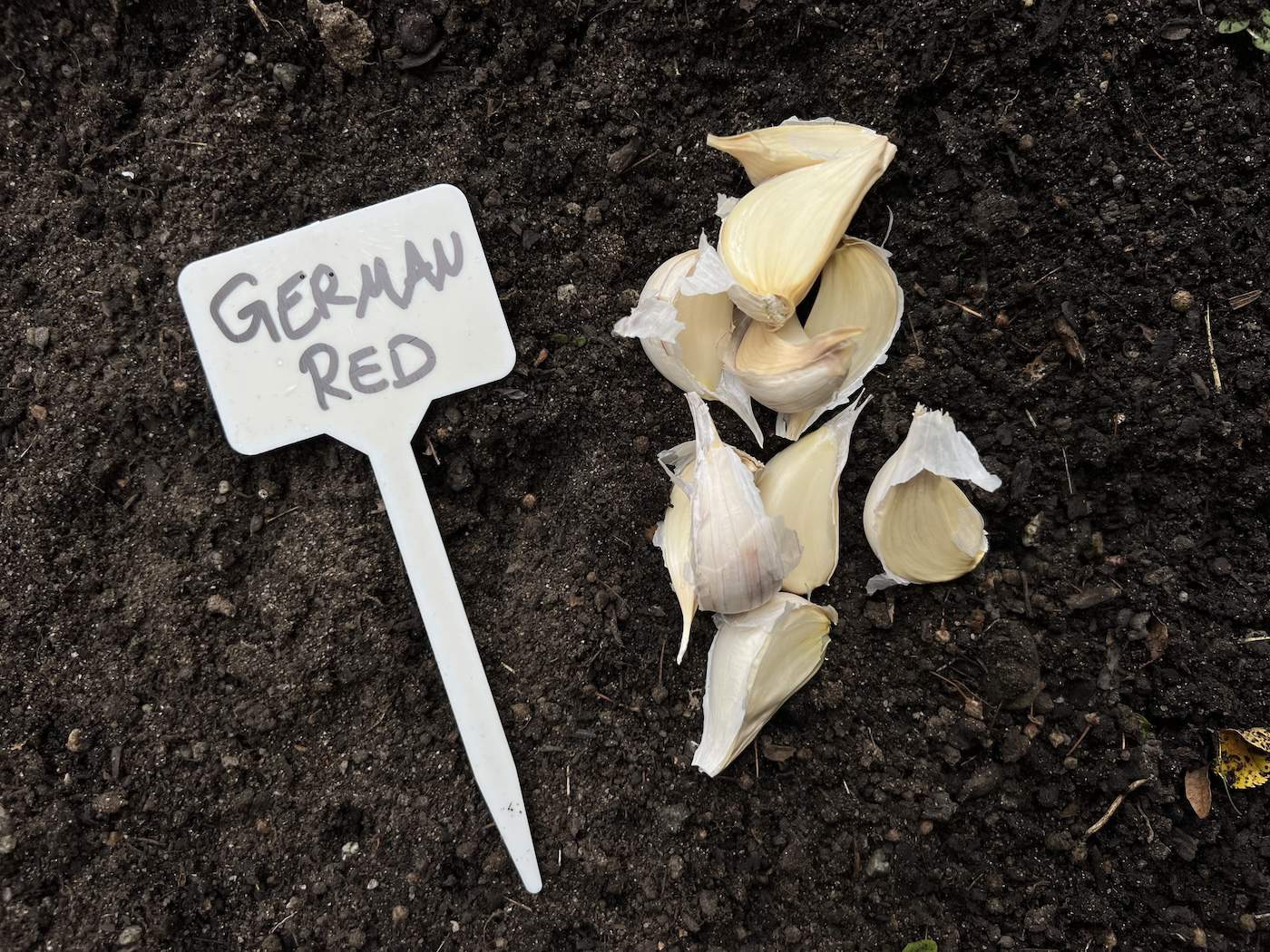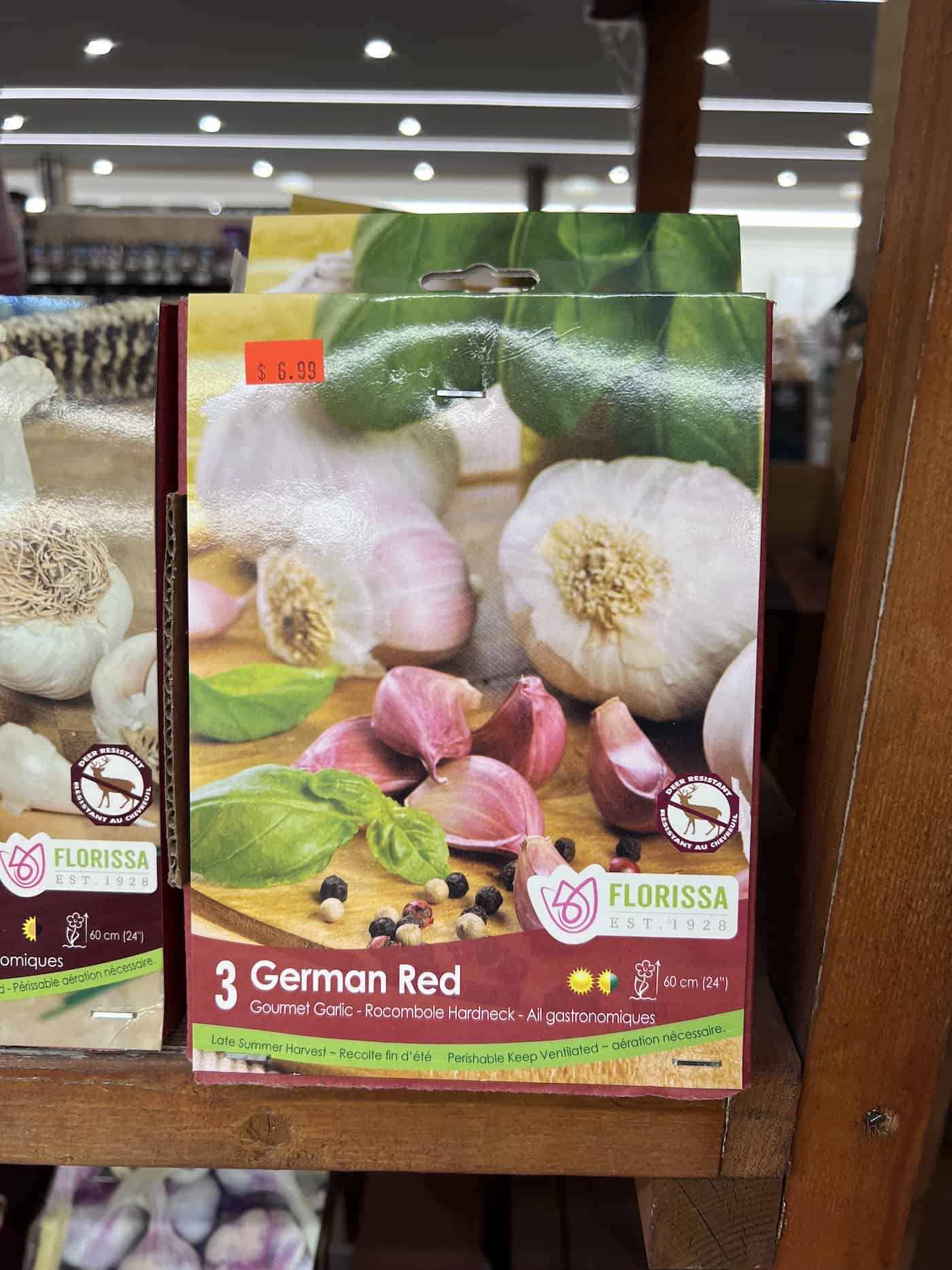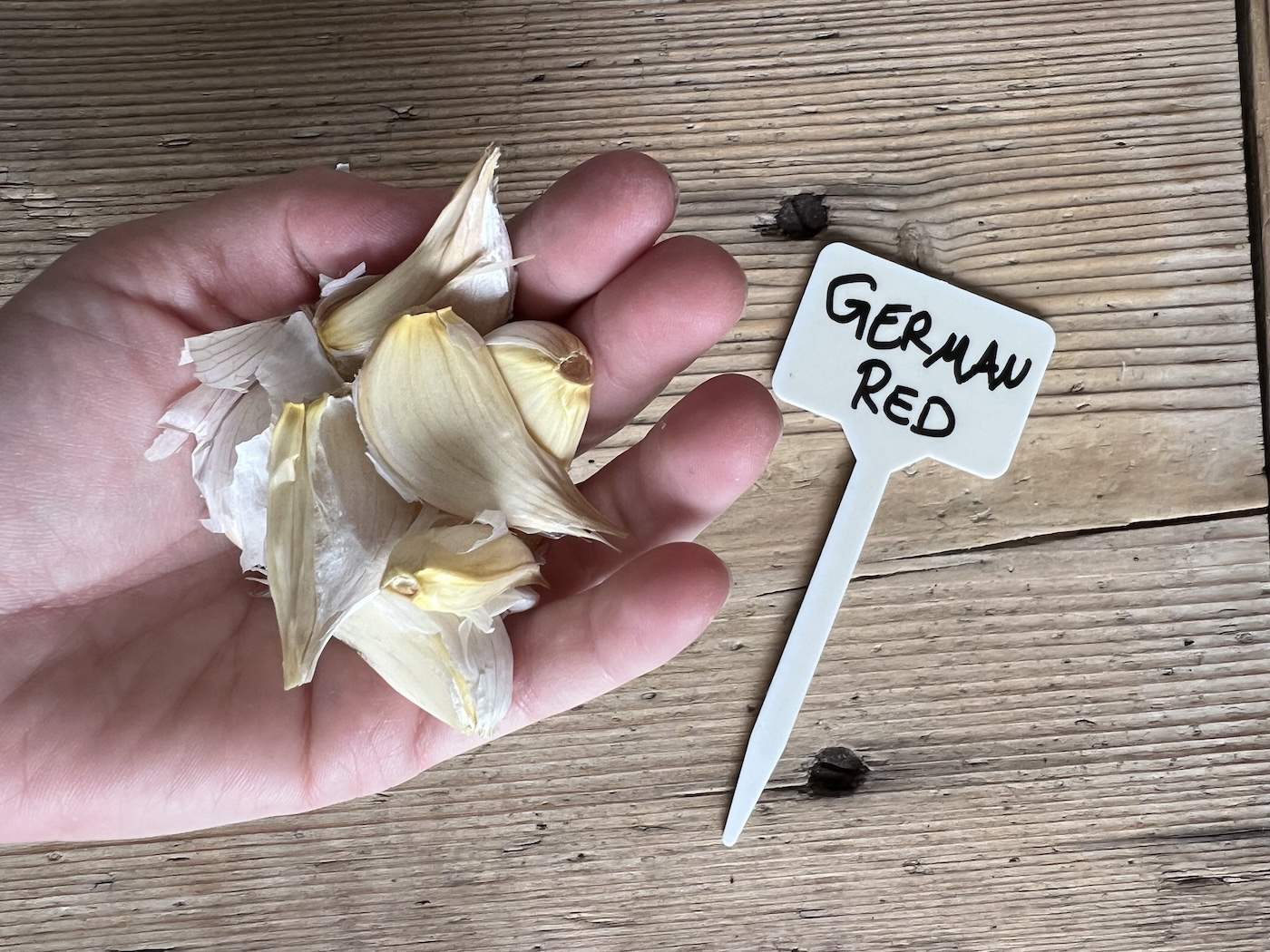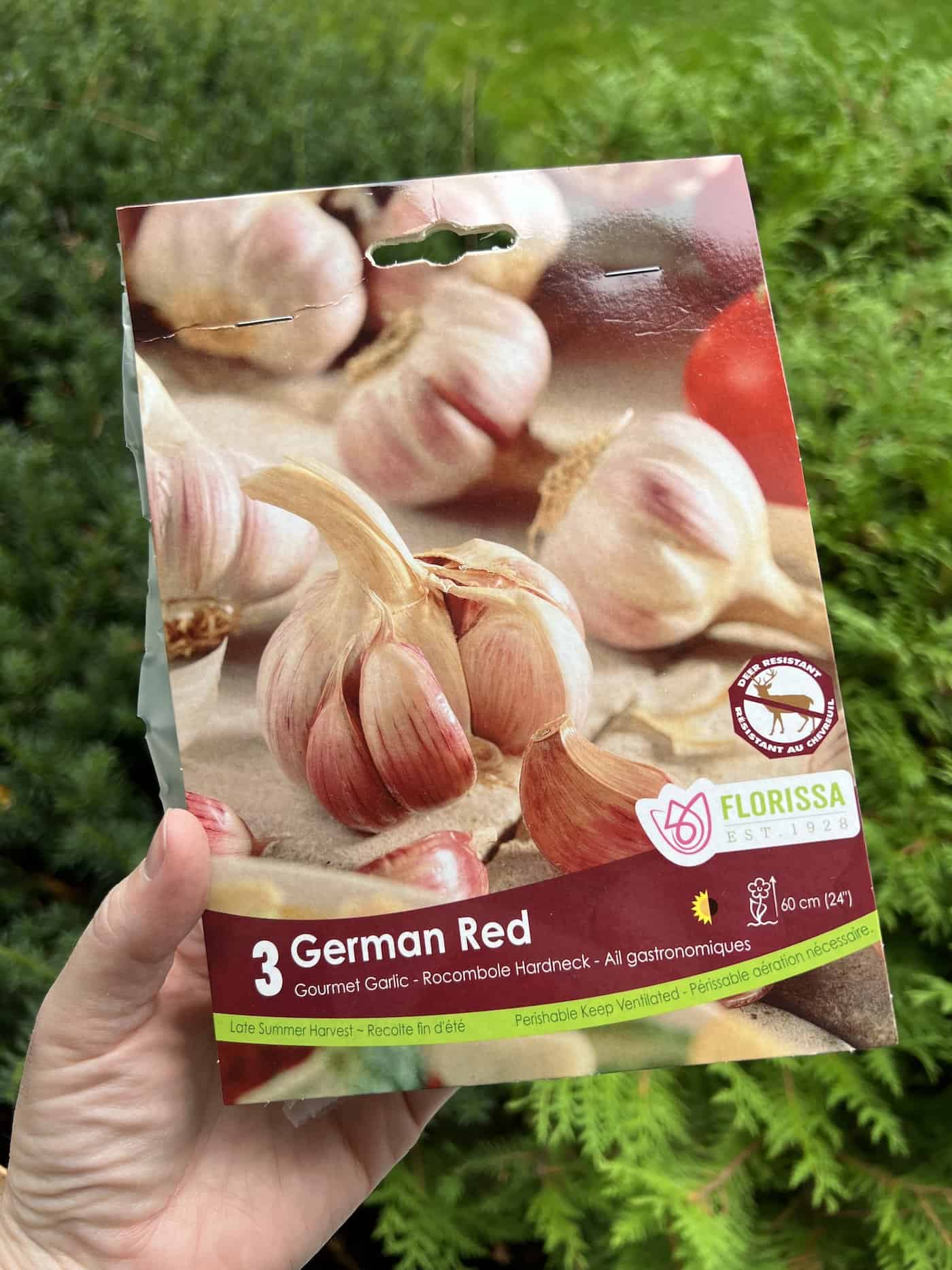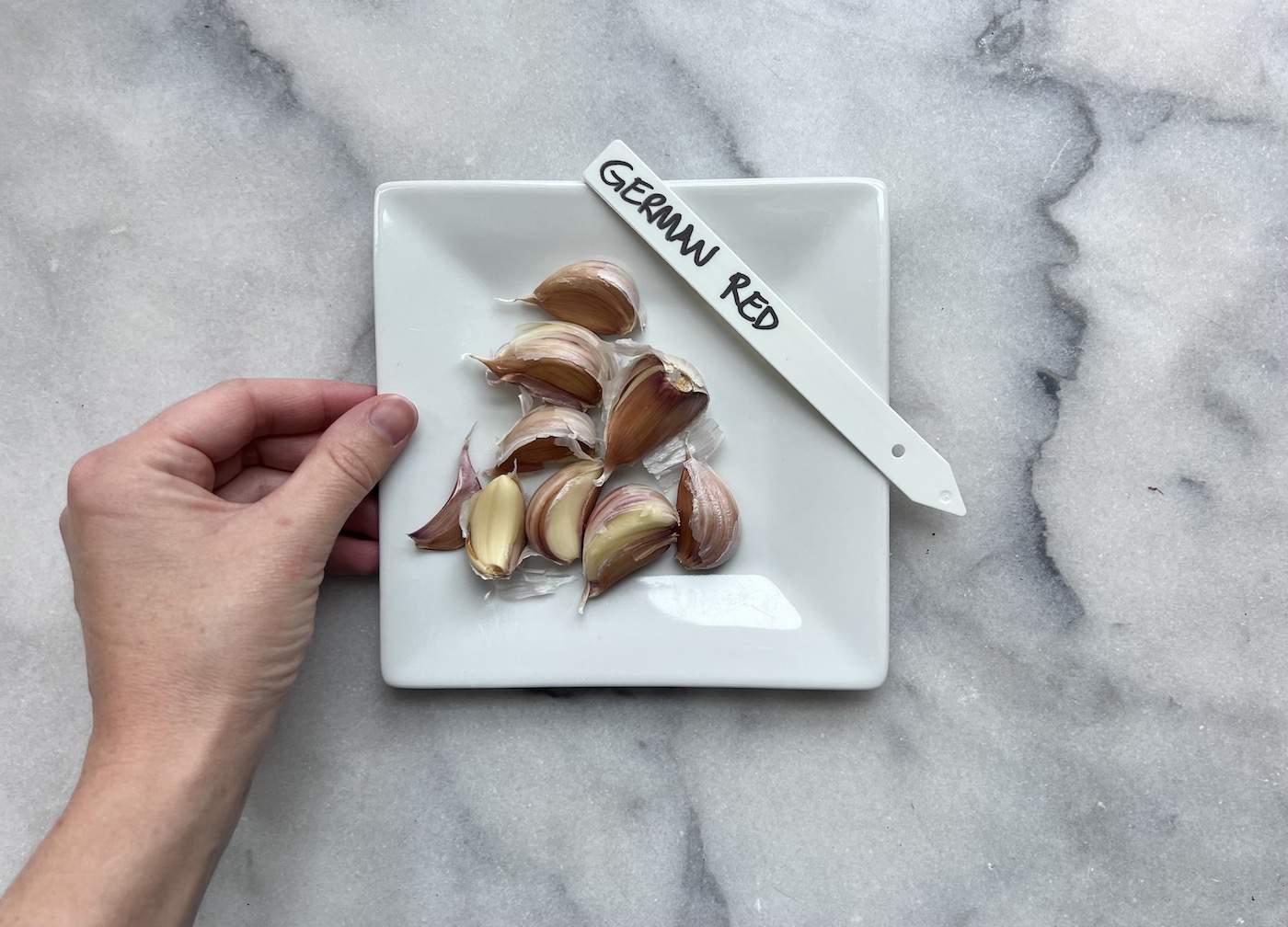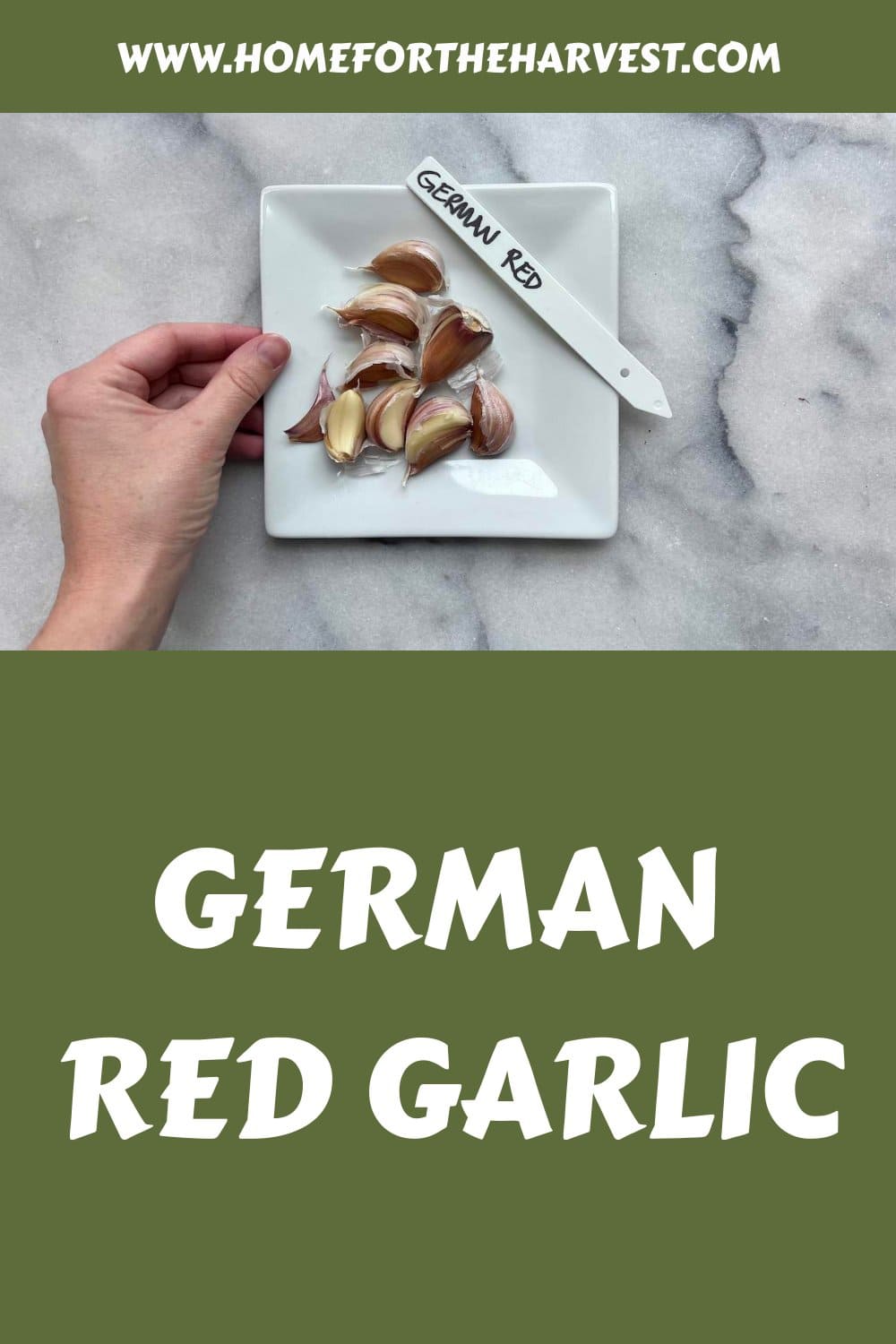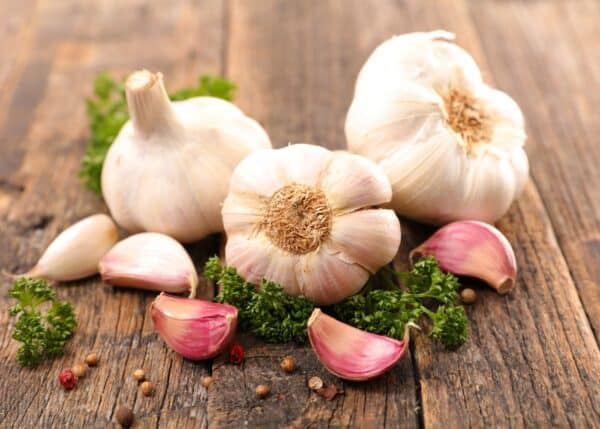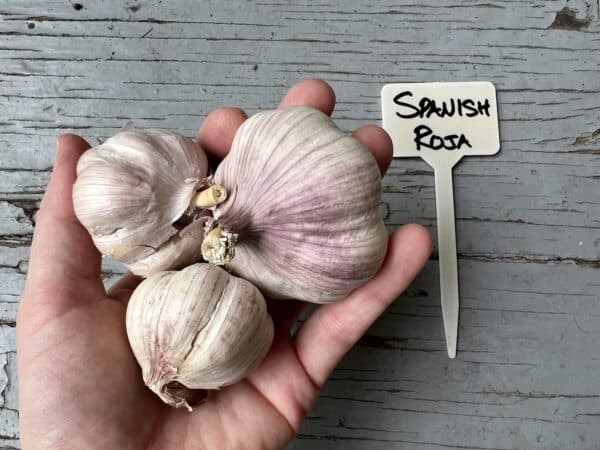German Red garlic, a hardneck variety from the rocambole group, is renowned for its vibrant, reddish cloves and robust, spicy flavor. It thrives best in cold climates, and growers often find it challenging due to its susceptibility to moisture-related issues and a short storage life of 3-4 months. However, its unique and bold taste, especially when used in dishes like garlic bread and pesto, keeps it in high demand among chefs and culinary enthusiasts.
Introduction to German Red garlic
Originating from the Rocambole family, German Red garlic is recognized for its characteristic reddish cloves and robust, spicy flavor. Best suited for cold winter climates, it’s a favorite among garlic enthusiasts, particularly for its bold taste that enhances various dishes. This hardneck variety features medium to deep red bulbs, typically yielding 8-12 cloves per bulb, and while it presents certain cultivation challenges, its unique flavor profile keeps it in demand.
Farmers often describe German Red garlic as a challenging cultivar to grow, especially in fluctuating conditions. Its susceptibility to moisture-related fungal issues and its loosely wrapped cloves, which can expose them to micro-organisms, lead to reduced storage life, often lasting just 3-4 months. These loose wrappings, while contributing to its easy-to-peel nature, can cause the garlic to deteriorate before it reaches planting time.

Due to these challenges, many garlic growers report only being able to sell a small portion of their yield, with the rest being susceptible to rot or aesthetic issues. Consequently, German Red has become less common among commercial growers, but it remains prized in certain microclimates and smaller gardens where more individualized care can be provided.
Nonetheless, the culinary appeal of German Red is undeniable. Chefs and home cooks alike value it for its strong, spicy, and robust flavor, which shines whether used raw, sautéed, or roasted. Its zestiness complements a variety of dishes, making it an excellent choice for garlic bread, pesto, and any other dish that requires a standout garlic flavor.
Although it might have a shorter shelf-life than other varieties, its delectable taste makes it worthwhile for many home growers. Those looking for a garlic variety that brings a punch of flavor and a touch of color to their dishes will undoubtedly appreciate the offerings of German Red garlic.

Flavor profile of German Red garlic
German Red garlic boasts a full-bodied, robust flavor that sets the benchmark for true garlic taste. Its initial bite is intensely spicy and hot, which mellows slightly when cooked to reveal a rich complexity. The garlic’s inherent zestiness is complemented by subtle undertones of warmth, making it a favored gourmet choice for those seeking a strong and authentic garlic experience.
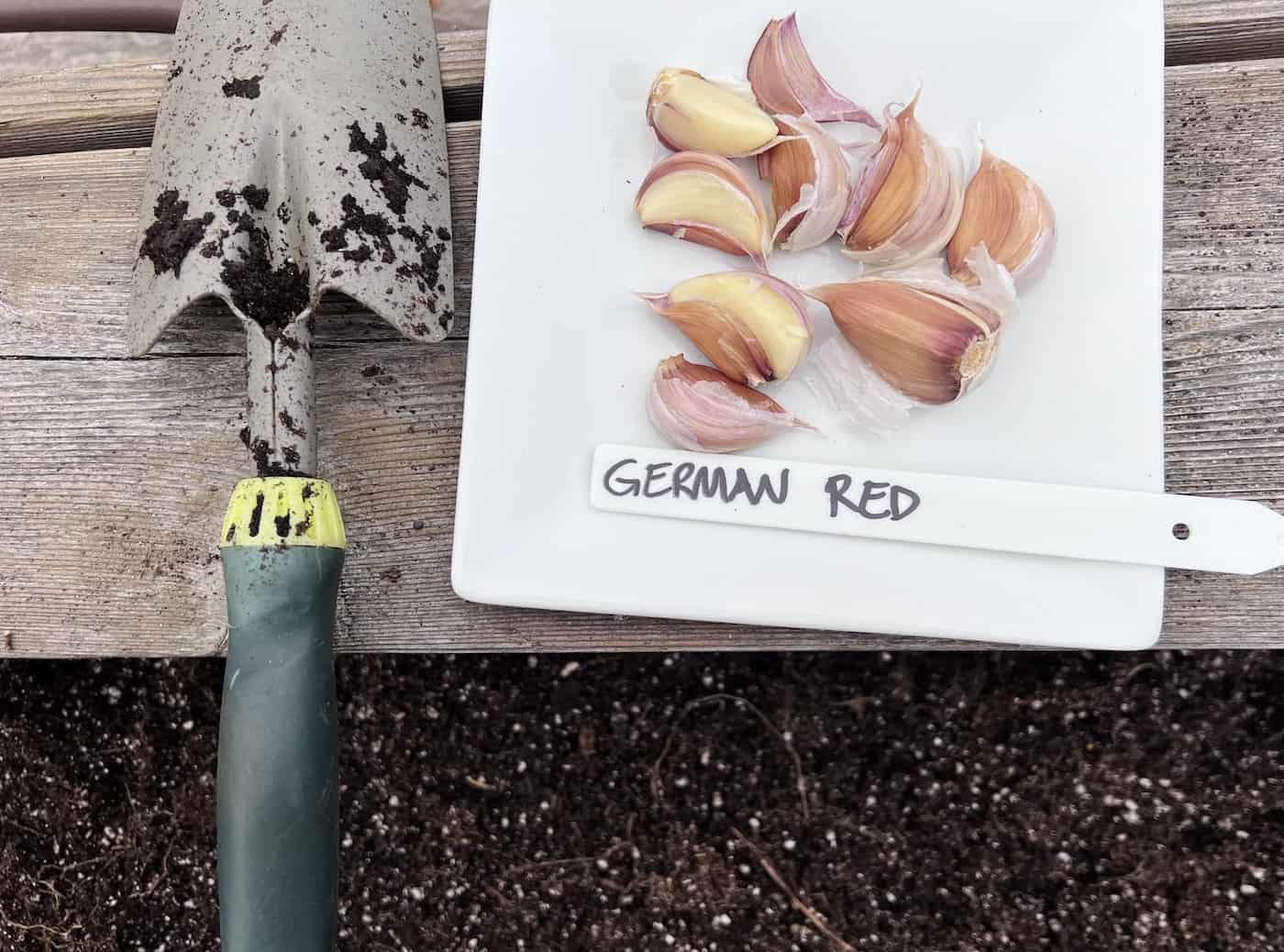
How to grow German Red garlic at home
Here are the basic steps for growing German Red garlic.
- Site Selection:
- Choose a location with well-draining soil. German Red is especially sensitive to soil moisture and can develop fungal issues in waterlogged conditions. Raised beds can work well.
- Ensure the location receives full sun for at least 6 hours a day.
- Soil Preparation:
- Till the soil to a depth of 12 inches.
- If your soil is heavy or clayey, incorporate organic matter such as well-composted manure or leaf mold to improve drainage.
- Maintain a pH level between 6.5 and 7.5. Use a soil test kit to determine pH and adjust accordingly with lime or sulfur.
- Planting:
- Plant in the fall, as German Red benefits from a cold period to develop bulbs.
- Separate the cloves just before planting and choose the largest; smaller cloves can be used for cooking.
- Plant cloves pointy-end up, 3 inches deep, and 6 inches apart.
- In extremely cold regions, consider planting cloves 4 inches deep for extra protection.
- Mulching:
- After planting, cover the bed with 3-4 inches of organic mulch like straw or leaves. This insulates the soil, regulates moisture, and suppresses weeds.
- Watering:
- Water moderately in the beginning, then reduce watering as the season progresses. Over-watering, especially towards the end of the growth cycle, can lead to bulb rot.
- Spring Care:
- Once the shoots emerge, fertilize with a balanced, slow-release fertilizer.
- Remove flower scapes (the curly green stems) when they appear. This directs the plant’s energy into bulb growth and provides a tasty treat for cooks.
- Harvesting:
- Harvest in late spring or early summer when about 50% of the leaves have turned yellow.
- Use a garden fork to lift bulbs, being careful not to bruise or damage them.
- Shake off excess soil, but don’t wash the bulbs.
- Curing:
- Lay bulbs out in a well-ventilated, shaded area for 2-3 weeks. This process helps to extend their storage life.
- Once cured, trim off the roots and the stalks. You can also brush off any remaining soil.
- Storage:
- Store in a cool, dry place. Remember, German Red has a shorter storage life (3-4 months) than other garlic varieties, so use it before others.
- Monitor stored bulbs regularly for any signs of deterioration.
